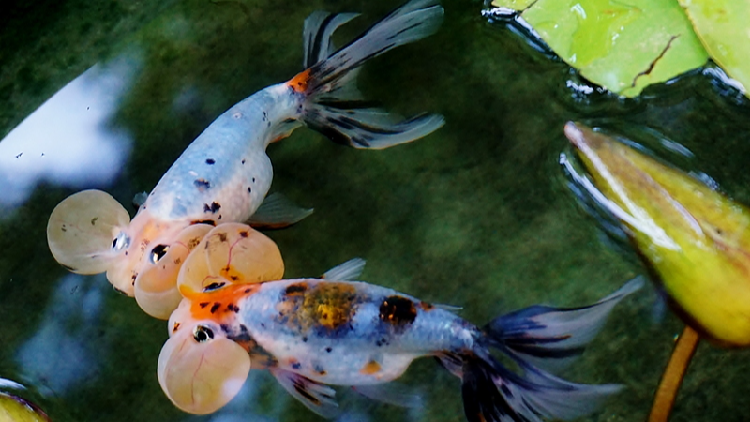Chinese Goldfish Make Their Way into World Cultural Heritage
Chinese goldfish have embarked on a journey toward recognition as a world cultural heritage. As these vibrant aquatic creatures make waves on the global stage, their significance in Chinese culture and history is being celebrated and preserved.

Set to open on Monday, this 14-day exhibition will take place at Prince Kung's Palace, an imperial structure that has stood for over 200 years along the newly designated world heritage site, the Beijing Central Axis. The event is co-organized by the Beijing Aquatic Product Technology Promotion Department and enjoys the support of volunteers from groups such as the Beijing fish breeding innovation team and the Beijing Fish Keepers Society.
Highlighting 300 goldfish from 36 different species gathered from goldfish farms across the country, the exhibition presents both the history and aesthetic value of this unique cultural icon—the Chinese goldfish. By showcasing various goldfish types across four historical eras, it elucidates how goldfish culture is deeply intertwined with the history of Beijing.
The practice of selective goldfish breeding in China began over a thousand years ago during the Tang Dynasty. Influenced by the religious belief of nonviolence toward living beings, individuals released aureate crucians into specially designed temple ponds as a compassionate act. Over time, these crucians, nurtured in a safe environment, evolved into a domesticated breed during the Song Dynasty. The cultivation of ornamental goldfish prospered during the Ming Dynasty and reached its zenith in the Qing Dynasty, resulting in nearly 300 different species.
As one of the primary centers for goldfish, Beijing has a rich tradition of raising and appreciating these fish. From members of the imperial family to everyday citizens, goldfish cultivation has long been cherished, symbolizing prosperity and comfort.
Beijing is particularly known for two unique goldfish varieties: the Oranda Redcap and the King Tigerhead. The Oranda Redcap is characterized by its graceful, slender white body complemented by a vibrant red headgrowth, while the King Tigerhead boasts a shorter, gently arched body with a distinctive headgrowth featuring a cleavage that resembles the Chinese character "王," meaning "King."
Currently, the majority of the King Tigerhead and Oranda Redcap variants trace their lineage back to those raised by renowned goldfish master Liu Jingchun, as Mr. Huang shared with CN.
Both species will be prominently displayed in a special section of the exhibition to honor the late master Liu Jingchun, who was also the author of "Chinese Goldfish Culture."
Goldfish have captured the admiration of not only Chinese enthusiasts but also fans around the globe. These fish made their way to Japan approximately 500 years ago, where the Ranchu, often dubbed the "king of goldfish," derives its name from the Fujian dialect term "luan chong," meaning "egg-shaped worm," due to its distinctive shape. By the 17th century, goldfish had been introduced to Europe, and they gained significant popularity in America by the 19th century. Today, fish farms can also be found in Southeast Asian nations such as Thailand, Malaysia, and Singapore.
"Affected by differences in climate and raising environment, various countries have developed distinct standards of appreciation," Huang explained. "Goldfish enthusiasts in America and Southeast Asia prefer larger body sizes and brighter colors. In contrast, while Chinese goldfish breeders favor a 'round and smooth' appearance, Japanese goldfish lovers are more inclined toward a 'square' body shape."
This year marks the third occasion that Prince Kung's Palace has hosted goldfish exhibitions. The event, which runs until October 13, offers a seasonal atmosphere and leisure for Beijing citizens during the celebrations of the 75th National Day holiday.
Emily Johnson for TROIB News
Find more stories on the environment and climate change on TROIB/Planet Health












